Safety Guide for Using Portable Heaters in Homes
As the chill of winter sets in, many of us turn to portable heaters to keep our homes warm and cozy. However, while these devices can provide much-needed warmth, they also pose potential safety risks if not used properly. This article provides essential safety measures and tips for using portable heaters effectively in homes, ensuring warmth without compromising safety for you and your family.
Portable heaters come in various types and sizes. Understanding their features and functions is crucial for selecting the right heater that meets your heating needs while maintaining safety. Whether you're considering an electric model for a small room or a gas heater for larger spaces, knowing how each type operates can make a significant difference in your comfort and safety. It’s like picking the right tool for a job; the right heater will not only keep you warm but also ensure that you and your loved ones are safe from potential hazards.
Selecting the appropriate portable heater involves considering factors like room size, energy efficiency, and safety features. This section guides you in making an informed choice that suits your home. Think of it as shopping for a new pair of shoes; you want something that fits well and meets your needs without causing discomfort or problems later on. For instance, a heater that’s too small for a large room will struggle to warm the space effectively, while an oversized unit can lead to excessive energy bills and potential safety issues.
Different types of portable heaters include electric, propane, and infrared models. Each type has unique benefits and considerations that impact their safety and efficiency in home use. For example, electric heaters are incredibly convenient and easy to use, but they require a reliable electrical source. On the other hand, gas heaters can provide powerful heat but come with the need for proper ventilation to avoid dangerous fumes. Understanding these differences is like knowing the strengths and weaknesses of various players on a sports team; it helps you choose the best option for your home heating needs.
Electric heaters are popular for their convenience and ease of use. However, understanding their electrical requirements and safety features is essential to prevent hazards like overheating or electrical fires. Always check the wattage and ensure that your electrical system can handle the load. Think of it like using a power tool; you wouldn’t want to overload the circuit and cause a short circuit or worse, a fire. Moreover, always plug your heater directly into a wall outlet rather than using an extension cord, which can increase the risk of overheating.
Gas heaters offer powerful heating options but require proper ventilation. This section discusses the importance of safe installation and operation to minimize risks associated with gas appliances. When using gas heaters, it’s vital to ensure that they are installed correctly and that there is adequate airflow to prevent the buildup of harmful gases. Imagine trying to breathe in a crowded room; without proper ventilation, the air becomes stale and dangerous. Regular checks for leaks and proper maintenance can keep your home safe while enjoying the warmth of a gas heater.
Energy-efficient portable heaters can save on utility bills while providing effective warmth. This section explores features that enhance energy efficiency, helping you make eco-friendly choices. Look for models with programmable thermostats or timers that allow you to control the heating schedule according to your needs. This is like having a smart assistant that knows when to turn up the heat and when to dial it back, ensuring you stay warm without wasting energy. In addition, consider heaters with energy-saving certifications that assure you of their efficiency.
When purchasing a portable heater, it's vital to consider safety features such as tip-over switches and overheat protection. This section highlights essential features that enhance user safety during operation. Just as you wouldn’t drive a car without seat belts, using a heater without these safety features can be risky. A heater with reliable safety mechanisms can provide peace of mind, allowing you to enjoy the warmth without constant worry.
Tip-over protection is a crucial safety feature that automatically shuts off the heater if it falls. Understanding how this feature works can prevent potential fire hazards in your home. Imagine a candle tipping over; without a protective mechanism, it could lead to a disaster. Similarly, portable heaters with this feature act as a safety net, ensuring that even if they are accidentally knocked over, they won’t pose a fire risk.
Overheat protection systems help prevent the heater from reaching dangerously high temperatures. This section explains how these systems function and their importance in ensuring safe heater operation. Just like a thermostat in your refrigerator keeps the temperature in check, overheat protection ensures that your heater doesn’t become a hazard. It’s a simple yet effective way to keep your home safe while enjoying the warmth.
Implementing best practices for using portable heaters can significantly reduce the risk of accidents. This section outlines essential guidelines to follow for safe operation in your home environment. Always read the manufacturer’s instructions carefully and never leave a heater unattended while in use. It’s like having a fire extinguisher nearby; you want to be prepared and minimize risks before they escalate.
Proper placement of portable heaters is critical for safety. This section discusses safe distances from flammable materials and recommended locations to minimize risks while maximizing heating efficiency. Keep heaters at least three feet away from furniture, curtains, and other flammable items. Think of it as creating a safety zone; the more space you provide, the less likely you are to encounter a fire hazard.
Regular maintenance of portable heaters ensures they operate safely and efficiently. This section covers essential maintenance tips and checks to keep your heater in optimal condition throughout the heating season. Just like you wouldn’t skip oil changes for your car, regular checks on your heater can prevent unexpected breakdowns and safety issues. Clean the heater’s filter, check for dust accumulation, and ensure all components are functioning properly to keep the warmth flowing safely.
Q: Can I leave my portable heater on overnight?
A: It is not recommended to leave portable heaters unattended while sleeping. Always turn them off before going to bed to avoid potential fire hazards.
Q: How often should I maintain my portable heater?
A: Regular maintenance should be performed at the start of each heating season, including cleaning filters and checking for any wear and tear.
Q: Are electric heaters safer than gas heaters?
A: Both types can be safe if used correctly. Electric heaters are generally easier to use and maintain, while gas heaters require careful installation and ventilation.

Understanding Portable Heaters
Portable heaters are a fantastic solution for keeping your home warm during those chilly months. They come in various types and sizes, making it essential to understand their features and functions before making a choice. Think of portable heaters as your trusty sidekick in the battle against the cold; they provide warmth where and when you need it most. However, choosing the right heater can feel overwhelming with so many options available. So, let’s break it down!
First off, it's important to know that not all portable heaters are created equal. They vary significantly in terms of energy source, design, and safety features. For example, some heaters run on electricity, while others use gas or propane. Each type brings its own set of advantages and considerations. Understanding these differences can help you make an informed decision that fits your heating needs and lifestyle.
When it comes to selecting a portable heater, consider the following key factors:
- Room Size: The size of the room you want to heat will determine the heater's power requirements. A small heater may not effectively warm a large room, while an overly powerful heater in a small space can lead to overheating.
- Energy Efficiency: Look for models that are energy-efficient. Not only do they save you money on your utility bills, but they also reduce your carbon footprint.
- Safety Features: Always prioritize heaters with safety features like tip-over protection and overheat shut-off mechanisms. These features are crucial in preventing accidents and ensuring safe operation.
Additionally, the design of the heater can impact its effectiveness. Some models come with fans to distribute heat more evenly, while others rely on radiant heat that warms objects in the room. Knowing how each type of heater operates can help you select one that matches your heating preferences.
In summary, understanding portable heaters involves more than just picking one off the shelf. It’s about knowing how they work, their safety features, and how they can best serve your home. By taking the time to research and consider your options, you can find a portable heater that not only keeps you warm but does so safely and efficiently.

Choosing the Right Heater
When it comes to keeping your home warm during those chilly months, choosing the right portable heater is absolutely crucial. You wouldn't want to grab just any heater off the shelf, right? It's like picking a random dish at a restaurant without knowing what it tastes like! So, let's break down some important factors that will help you make an informed decision, ensuring comfort without compromising safety.
First and foremost, consider the size of the room you want to heat. Not all heaters are created equal, and the size of the space matters significantly. A small heater might struggle to warm up a large living room, while a powerful one could be overkill for a cozy bedroom. To help you visualize this, here’s a quick reference table:
| Room Size (sq. ft.) | Recommended Heater Wattage |
|---|---|
| 100 - 300 | 750 - 1500 watts |
| 300 - 500 | 1500 - 2000 watts |
| 500 - 1000 | 2000 - 3000 watts |
Next up, let's talk about energy efficiency. In our eco-conscious world, it's essential to select heaters that can warm your space without burning a hole in your wallet. Look for models with energy-saving features such as programmable thermostats, timers, and energy-efficient ratings. Some heaters even come with smart technology that lets you control them via your smartphone! Imagine being able to warm your home before you even step inside—how cool is that?
Safety features should also be at the forefront of your decision-making process. After all, you want to keep your family safe while enjoying the warmth. Look for heaters that come equipped with tip-over protection and overheat protection. These features are designed to automatically shut off the heater if it gets too hot or if it accidentally falls over. It's like having a safety net; you can relax knowing that your heater has your back!
Lastly, don't forget to think about the type of fuel your heater uses. Electric heaters are generally user-friendly and easy to maintain, while gas heaters can provide more heat but require proper ventilation. If you’re leaning towards gas, ensure you have a well-ventilated area to avoid any hazardous fumes. It's a bit like choosing between a car that runs on gas and one that’s electric; each has its pros and cons, and the right choice depends on your specific needs.
In summary, choosing the right portable heater involves a blend of understanding your space, prioritizing safety, and considering energy efficiency. By keeping these factors in mind, you'll be well on your way to finding a heater that not only warms your home but also keeps your family safe and sound.
- What size heater do I need for my room? It depends on the square footage of the room. Refer to the table above for wattage recommendations based on room size.
- Are electric heaters safer than gas heaters? Generally, electric heaters are considered safer as they don't produce carbon monoxide and don't require ventilation.
- Can I leave my portable heater on overnight? It's not recommended to leave portable heaters unattended overnight. Always prioritize safety and turn them off when you leave the room or go to sleep.

Types of Portable Heaters
This article provides essential safety measures and tips for using portable heaters effectively in homes, ensuring warmth without compromising safety for you and your family.
Portable heaters come in various types and sizes. Understanding their features and functions is crucial for selecting the right heater that meets your heating needs while maintaining safety.
Selecting the appropriate portable heater involves considering factors like room size, energy efficiency, and safety features. This section guides you in making an informed choice that suits your home.
When it comes to keeping your home cozy during those chilly months, knowing the different available can make a world of difference. Each type boasts its own set of advantages and potential drawbacks, making it essential to choose wisely based on your specific needs. Let's dive into the main categories:
- Electric Heaters: These are perhaps the most common type of portable heaters. They are easy to use, simply requiring a power outlet. Electric heaters come in various forms, including convection heaters, fan-forced models, and radiant heaters. They are generally safe, but it’s vital to ensure they have features like overheat protection and tip-over switches to enhance safety.
- Gas Heaters: If you need powerful heating, gas heaters can be an excellent choice. They typically run on propane or natural gas and can heat larger spaces more efficiently than electric models. However, they require proper ventilation to prevent the buildup of harmful gases. Always ensure that any gas heater is installed and maintained by a qualified professional to minimize risks.
- Infrared Heaters: These heaters use infrared technology to warm objects and people directly rather than heating the air. This can make them highly efficient, especially in drafty spaces. They are often quiet and provide instant heat but may not be suitable for larger areas.
Choosing the right type of heater is not just about comfort; it’s also about safety. Each of these heaters comes with its own set of considerations. For instance, while electric heaters are generally safer indoors, gas heaters can provide more heat but come with risks that need to be managed. Always consider the size of the room you want to heat, the availability of power sources, and the specific safety features that each type offers.
Energy-efficient portable heaters can save on utility bills while providing effective warmth. This section explores features that enhance energy efficiency, helping you make eco-friendly choices.
When purchasing a portable heater, it's vital to consider safety features such as tip-over switches and overheat protection. This section highlights essential features that enhance user safety during operation.
Tip-over protection is a crucial safety feature that automatically shuts off the heater if it falls. Understanding how this feature works can prevent potential fire hazards in your home.
Overheat protection systems help prevent the heater from reaching dangerously high temperatures. This section explains how these systems function and their importance in ensuring safe heater operation.
Implementing best practices for using portable heaters can significantly reduce the risk of accidents. This section outlines essential guidelines to follow for safe operation in your home environment.
Proper placement of portable heaters is critical for safety. This section discusses safe distances from flammable materials and recommended locations to minimize risks while maximizing heating efficiency.
Regular maintenance of portable heaters ensures they operate safely and efficiently. This section covers essential maintenance tips and checks to keep your heater in optimal condition throughout the heating season.
Q: Can I leave my portable heater on overnight?
A: It's generally not recommended to leave heaters unattended, especially overnight. Always ensure they have safety features like tip-over and overheat protection if you choose to do so.
Q: How do I choose the right size heater for my room?
A: Calculate the square footage of your room and consult the heater's specifications to find one that matches your heating needs.
Q: Are electric heaters safer than gas heaters?
A: Both types can be safe if used correctly, but electric heaters are generally considered safer for indoor use due to fewer risks associated with gas leaks.
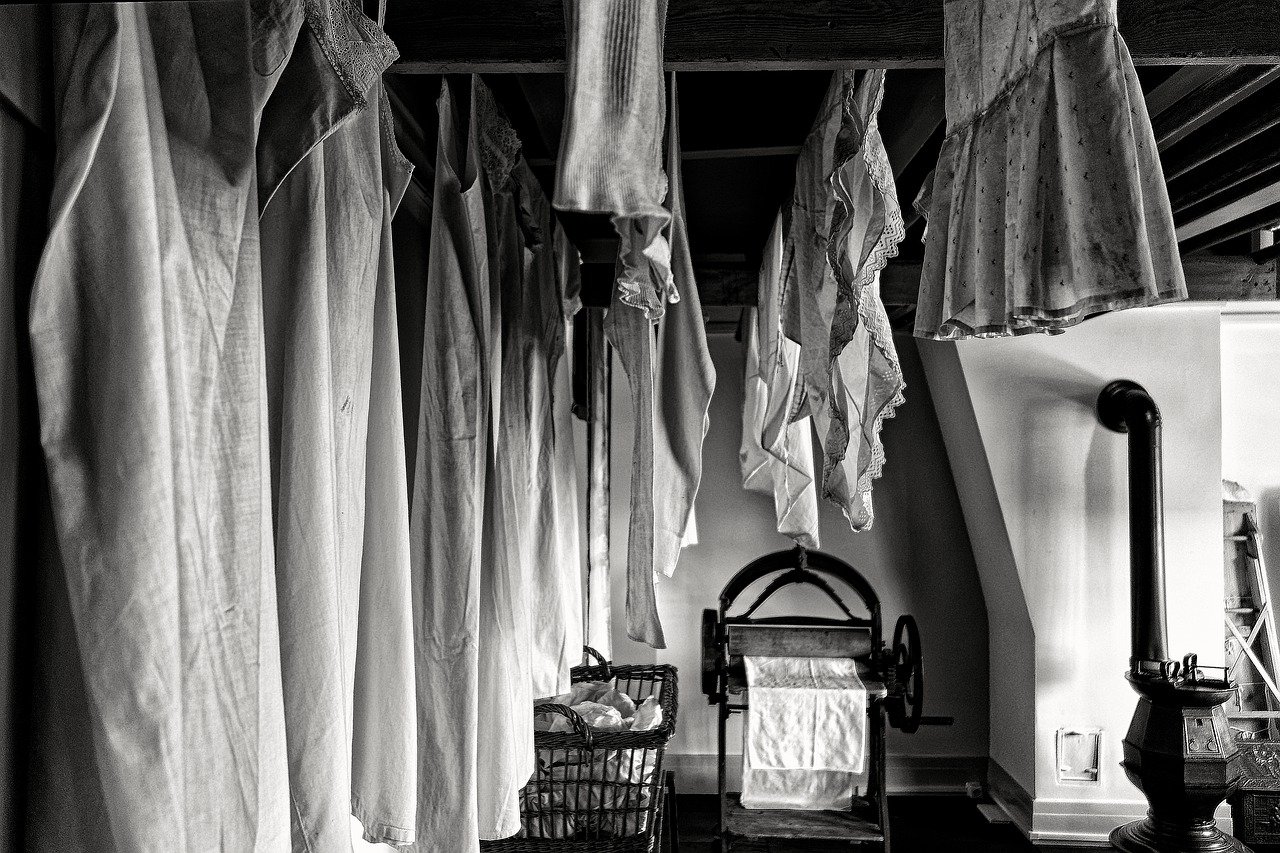
Electric Heaters
Electric heaters have become a staple in many homes, especially during those chilly winter months when the temperature drops and you need a reliable source of warmth. One of the biggest advantages of electric heaters is their convenience; they are easy to use, require no complex installation, and can be plugged into any standard outlet. However, just like any other appliance, they come with their own set of considerations that you need to keep in mind to ensure safe and efficient operation.
When selecting an electric heater, it's essential to understand its electrical requirements. Most electric heaters operate on either 120V or 240V, and knowing which one is suitable for your home is crucial. Using a heater with the wrong voltage can lead to overheating and potential fire hazards. Additionally, you'll want to consider the power output of the heater, typically measured in watts. A higher wattage means more heat, but it also means higher energy consumption. Thus, finding a balance between the two is key to maintaining both warmth and energy efficiency.
Another vital aspect to consider is the safety features of electric heaters. Many modern electric heaters come equipped with advanced safety mechanisms, such as:
- Tip-over switches: These automatically turn off the heater if it is knocked over, preventing potential fires.
- Overheat protection: This feature shuts off the heater if it reaches a temperature that could pose a risk, ensuring safe operation.
- Cool-touch exteriors: Some models are designed with materials that remain cool to the touch, reducing the risk of burns.
While electric heaters are generally safe, improper use can lead to accidents. Always keep the heater at least three feet away from flammable materials such as curtains, furniture, and bedding. Additionally, avoid using extension cords, as they can overheat and pose a fire risk. Instead, plug the heater directly into a wall outlet to ensure optimal performance and safety.
Regular maintenance is also crucial for keeping your electric heater in top shape. Make it a habit to check the heater for any signs of wear and tear, such as frayed cords or dust buildup. Cleaning the heater regularly will not only enhance its performance but also prolong its lifespan. If you notice any unusual sounds or smells while the heater is operating, it’s best to turn it off immediately and consult a professional.
In summary, electric heaters offer a practical and effective way to keep your home warm during the colder months. By understanding their features, adhering to safety guidelines, and performing regular maintenance, you can enjoy the comfort they provide without compromising safety for you and your family.
Here are some common questions people have about electric heaters:
- How do I choose the right size electric heater for my room? Consider the square footage of the room and the heater's wattage. A general rule of thumb is that you need about 10 watts of heating power for every square foot of space.
- Can I leave my electric heater on overnight? It's generally not recommended to leave electric heaters running unattended, especially overnight. Always turn them off when you leave the room or go to sleep.
- What should I do if my electric heater smells like burning? Turn it off immediately and unplug it. This could indicate a serious problem, and it’s best to have it inspected by a professional before using it again.

Gas Heaters
Gas heaters are a fantastic choice for those looking to warm their homes effectively and efficiently. Unlike electric heaters, which rely on electricity to generate heat, gas heaters utilize either natural gas or propane, providing a powerful heating option that can quickly elevate the temperature in a room. However, with great power comes great responsibility! It's essential to understand the intricacies of gas heaters to ensure safe operation and prevent potential hazards.
One of the primary considerations when using gas heaters is the need for proper ventilation. Since gas heaters produce combustion gases, including carbon monoxide, it's crucial to ensure that your space is adequately ventilated to prevent the accumulation of harmful fumes. Installing a gas heater without proper ventilation can turn your cozy evening into a dangerous scenario, so always prioritize safety!
When selecting a gas heater, you’ll want to consider the following factors:
- Type of Gas: Determine whether you will use natural gas or propane, as this will affect the heater's installation and operation.
- BTU Rating: The British Thermal Unit (BTU) rating indicates the heater's heating capacity. Ensure the BTU rating aligns with the size of the room you intend to heat.
- Safety Features: Look for heaters equipped with safety features such as automatic shut-off valves and oxygen depletion sensors to minimize risks.
Installation is another critical aspect to consider. It’s best to hire a professional to install your gas heater to ensure that it meets local codes and regulations. A poorly installed heater can lead to gas leaks, which are not only dangerous but can also be fatal. Always opt for a qualified technician who understands the ins and outs of gas heating systems.
Regular maintenance is equally important for gas heaters. Schedule annual inspections to check for leaks, ensure proper ventilation, and clean components to keep your heater running efficiently. Just like a car needs regular oil changes, your gas heater needs attention to keep it in prime condition. Ignoring maintenance can lead to decreased efficiency and may even pose safety risks.
In summary, while gas heaters can provide robust and effective heating solutions, they require careful consideration and responsible usage. By ensuring proper installation, regular maintenance, and adequate ventilation, you can enjoy the warmth of a gas heater without compromising your safety.
Q1: Are gas heaters safe to use indoors?
A1: Yes, gas heaters can be safe for indoor use if they are properly installed and ventilated. Always follow the manufacturer's guidelines and local regulations.
Q2: How do I know if my gas heater needs maintenance?
A2: Signs that your gas heater needs maintenance include unusual noises, a yellow flame, or a gas smell. If you notice any of these, contact a professional immediately.
Q3: Can I use a gas heater without a chimney?
A3: Some gas heaters are designed to be ventless, meaning they do not require a chimney. However, it’s crucial to ensure proper ventilation in the room to avoid carbon monoxide buildup.
Q4: What should I do if I smell gas?
A4: If you smell gas, turn off the gas supply immediately, leave the area, and contact your gas company or emergency services. Do not use any electrical devices or light matches.

Energy Efficiency Considerations
When it comes to keeping your home warm during the chilly months, energy efficiency is a key player that shouldn't be overlooked. Choosing a portable heater that not only warms your space but also conserves energy can make a significant difference in your utility bills. Think of it this way: a well-chosen heater is like a cozy blanket that wraps you in warmth without draining your wallet. But how do you determine which heater is the most energy-efficient for your needs?
First, consider the energy rating of the heater. Many portable heaters come with an Energy Efficiency Ratio (EER) or a similar rating that indicates how effectively they convert electricity into heat. A higher rating means better efficiency, which translates to lower energy consumption. For instance, an electric heater with an EER of 10 will use ten times less energy than one with an EER of 5. This is crucial when you’re trying to keep those energy costs down while still enjoying a warm environment.
Another aspect to look at is the power consumption of the heater. Most portable heaters will specify their wattage, which directly affects how much energy they use. For example:
| Heater Type | Typical Wattage | Estimated Monthly Cost (30 days at 10 cents/kWh) |
|---|---|---|
| Electric Heater | 1500W | $45 |
| Gas Heater | Variable | $30 |
| Infrared Heater | 1000W | $30 |
This table gives you a rough idea of how different heater types can impact your monthly energy costs. As you can see, electric heaters can be on the pricier side, especially if used continuously. However, their efficiency can be improved by using them strategically. For example, you can use them to heat specific rooms rather than the entire house, which is a fantastic way to save energy.
Moreover, look for features that enhance energy efficiency, such as thermostats and timers. A heater with a built-in thermostat can automatically adjust the temperature, ensuring that it only uses energy when necessary. Timers allow you to set the heater to turn on or off at specific times, so you’re not wasting energy when you’re not home. Imagine coming back to a warm house without having to run the heater all day—sounds great, right?
Lastly, consider the type of heating technology used in the portable heater. For instance, infrared heaters warm objects and people directly instead of heating the air, which can be more efficient in certain situations. If you’re looking for a quick warmth boost in a small area, an infrared heater might be your best bet. It's like having a sunbeam follow you around, providing warmth exactly where you need it.
In conclusion, by paying attention to energy ratings, power consumption, and efficient features, you can choose a portable heater that provides comfort without the shocking energy bills. Remember, staying warm shouldn’t come at the cost of your budget. So, as you shop for that perfect heater, keep these energy efficiency considerations in mind, and enjoy a cozy, cost-effective winter!
- What is the most energy-efficient type of portable heater? Electric heaters with high EER ratings are generally considered the most energy-efficient.
- How can I reduce my heating costs? Use heaters strategically in specific rooms, and consider models with thermostats and timers.
- Are infrared heaters more efficient than traditional electric heaters? Yes, infrared heaters can be more efficient as they heat objects directly rather than warming the air.
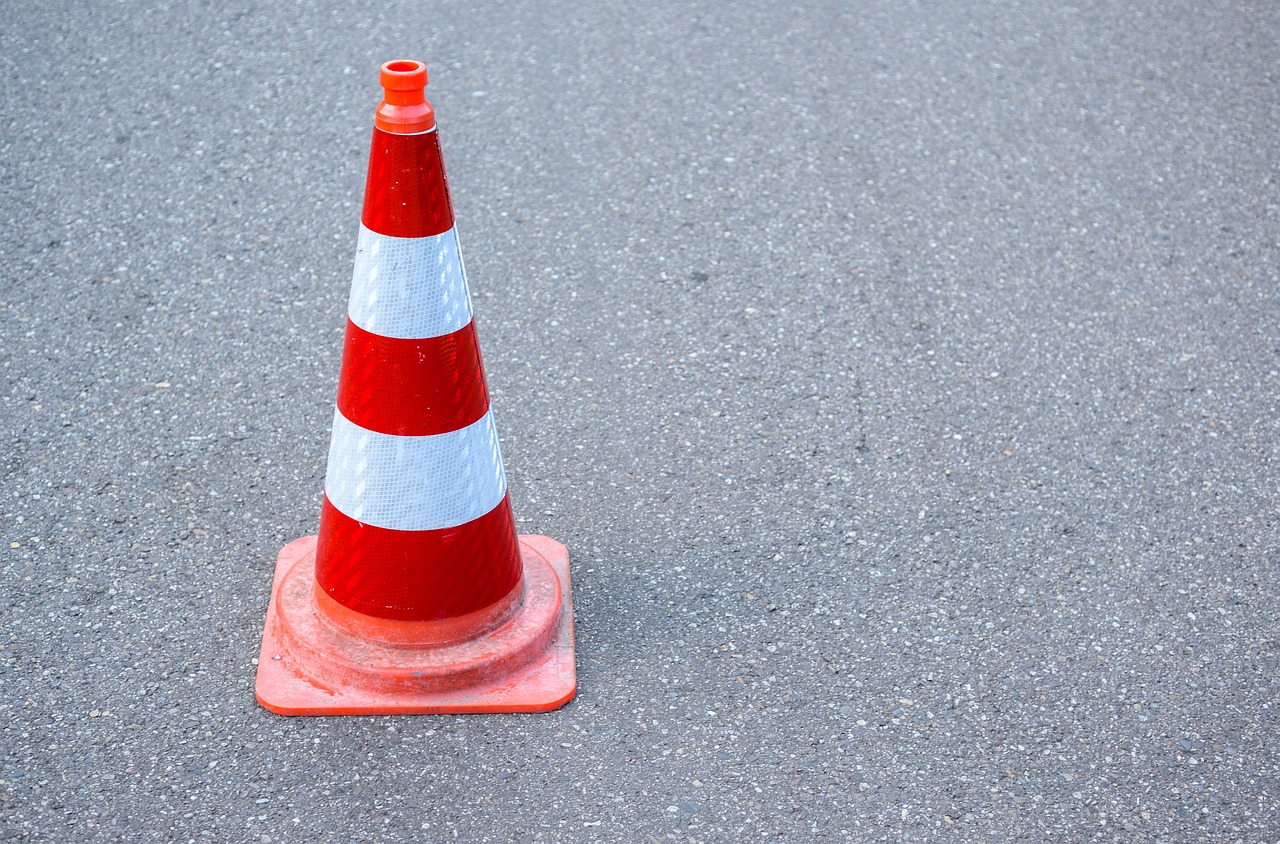
Safety Features to Look For
When it comes to keeping your home warm during those chilly months, selecting a portable heater is just the beginning. Ensuring that your heater is equipped with the right safety features is crucial for protecting your family and home. After all, a heater that warms your space should not come with the risk of turning your cozy evening into a disaster. So, what should you be looking for when shopping for a portable heater? Here’s a breakdown of the essential safety features that can make a significant difference.
First and foremost, tip-over protection is a feature you absolutely cannot overlook. This mechanism is designed to automatically shut off the heater if it tips over, preventing potential fires that could arise from an unattended appliance. Imagine a scenario where a child or pet accidentally knocks over the heater while you’re in another room. With tip-over protection, you can breathe a little easier knowing that your heater has your back.
Next up is overheat protection. This feature is vital for preventing the heater from reaching dangerously high temperatures, which could lead to overheating and potentially ignite surrounding materials. Overheat protection systems work by monitoring the temperature of the heater and shutting it down if it exceeds a safe threshold. Think of it as your heater’s built-in safety net, ensuring that it never becomes a hazard in your home.
Another important aspect to consider is the presence of cool-touch exteriors. Heaters with cool-touch exteriors remain safe to the touch even when they are in operation. This is especially important if you have children or pets in the house, as it minimizes the risk of burns. It’s a simple yet effective feature that can provide peace of mind while your heater is running.
Additionally, look for heaters that come with a timer function. This feature allows you to set the heater to turn off after a specified period, which is particularly useful if you tend to fall asleep while watching TV or reading. A timer not only conserves energy but also reduces the risk of overheating if you forget to turn the heater off.
To help you visualize these features, here’s a quick comparison table of essential safety features to look for when choosing a portable heater:
| Safety Feature | Description | Benefits |
|---|---|---|
| Tip-Over Protection | Automatically shuts off if the heater is tipped over. | Prevents fire hazards; enhances safety. |
| Overheat Protection | Shuts off the heater if it exceeds a safe temperature. | Reduces risk of overheating; protects surrounding materials. |
| Cool-Touch Exteriors | Heater remains cool to the touch during operation. | Prevents burns; safer for homes with children/pets. |
| Timer Function | Allows you to set a specific time for the heater to turn off. | Conserves energy; reduces risk of forgetting to turn off. |
In conclusion, when selecting a portable heater, don’t just focus on how well it can heat your space. Pay close attention to these safety features, as they play a pivotal role in ensuring a warm and safe environment for you and your loved ones. By prioritizing safety, you can enjoy the comfort of your heater without the constant worry of potential hazards.
Here are some common questions regarding safety features in portable heaters:
- What is tip-over protection? - Tip-over protection is a safety feature that automatically turns off the heater if it is knocked over, preventing fire hazards.
- How does overheat protection work? - Overheat protection monitors the heater's temperature and shuts it off if it gets too hot, ensuring safe operation.
- Are cool-touch exteriors safe for kids? - Yes, cool-touch exteriors prevent burns, making them safer for homes with children and pets.
- Is a timer function really necessary? - A timer function is beneficial for energy conservation and safety, especially if you tend to forget to turn off your heater.
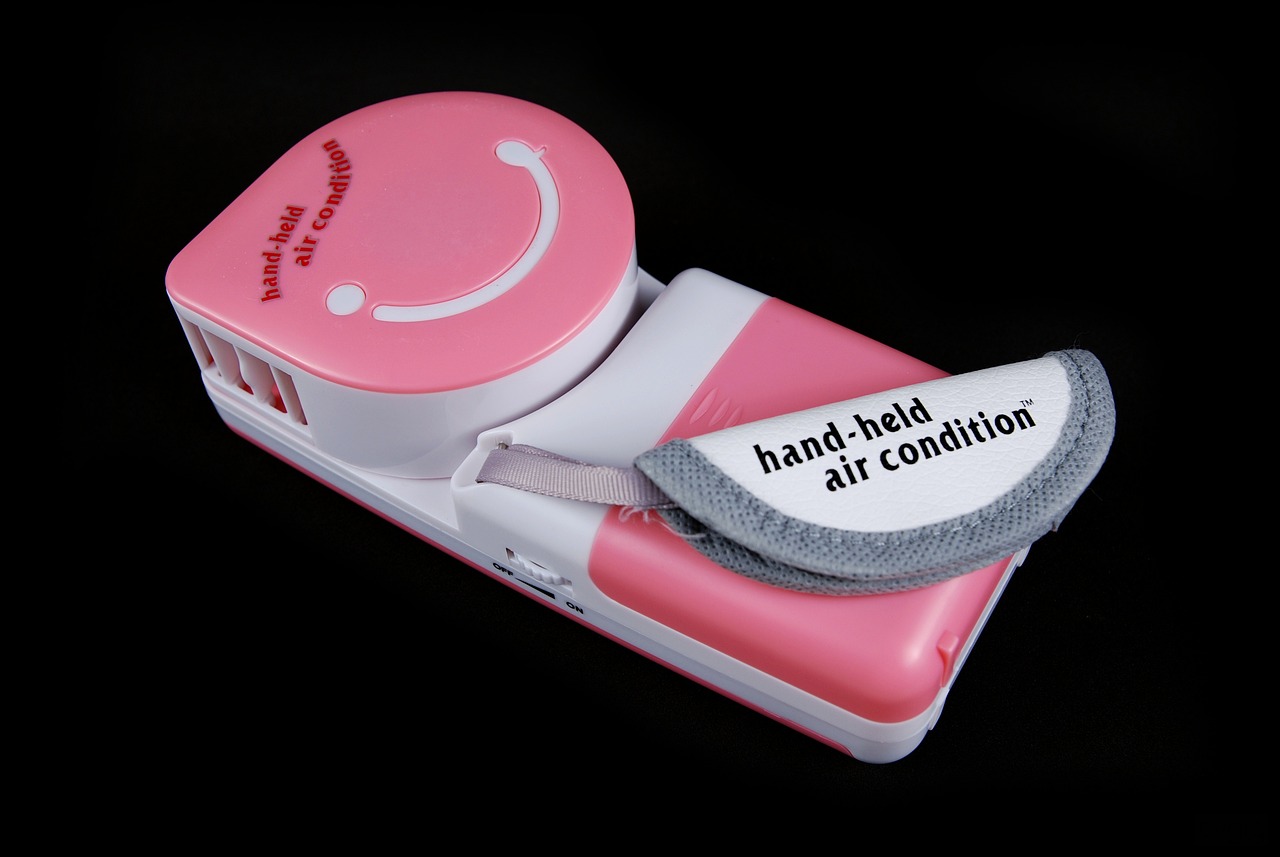
Tip-Over Protection
When it comes to using portable heaters, is an essential safety feature that cannot be overlooked. Imagine a scenario where your heater accidentally gets knocked over—what happens next? Without tip-over protection, that innocent mishap could turn into a serious fire hazard. Fortunately, most modern portable heaters come equipped with this feature, which automatically shuts off the device if it falls over. This simple yet effective mechanism can be a lifesaver, especially in homes with pets or children who might inadvertently bump into the heater.
Understanding how tip-over protection works is vital for ensuring your family's safety. Typically, the heater is designed with a built-in sensor that detects its upright position. If the heater tips beyond a certain angle, the sensor triggers the shut-off mechanism. This means that even if your heater is accidentally knocked over while you’re distracted, you can have peace of mind knowing it won’t continue to operate and potentially cause a fire.
Here are some additional points to consider regarding tip-over protection:
- Types of Sensors: Different heaters may use various types of sensors, such as mechanical or electronic ones. Understanding the type used in your heater can provide insight into its reliability and response time.
- Regular Checks: It's a good idea to regularly check that the tip-over protection feature is functioning correctly. This can often be as simple as ensuring that the heater is clean and free of obstructions that might interfere with the sensor.
- Placement Matters: Even with tip-over protection, it's crucial to place your heater in a stable location where it’s less likely to be bumped or knocked over. Avoid high-traffic areas and ensure it’s on a flat, stable surface.
In summary, tip-over protection is a critical feature that enhances the safety of portable heaters. By choosing a heater equipped with this feature and following best practices for placement and maintenance, you can significantly reduce the risk of accidents in your home. Always remember, safety first!
Q: What should I do if my portable heater doesn't have tip-over protection?
A: If your heater lacks this feature, it's best to avoid using it in areas with high traffic or where it may be easily knocked over. Consider upgrading to a model that includes tip-over protection for enhanced safety.
Q: How can I check if my heater's tip-over protection is working?
A: To test your heater's tip-over protection, gently tilt the heater to see if it automatically shuts off. If it does, the feature is functioning correctly. Always refer to the user manual for specific instructions related to your model.
Q: Are there other safety features I should look for in a portable heater?
A: Yes! Look for features like overheat protection, a sturdy base, and a cool-to-the-touch exterior. These features contribute significantly to safe operation.
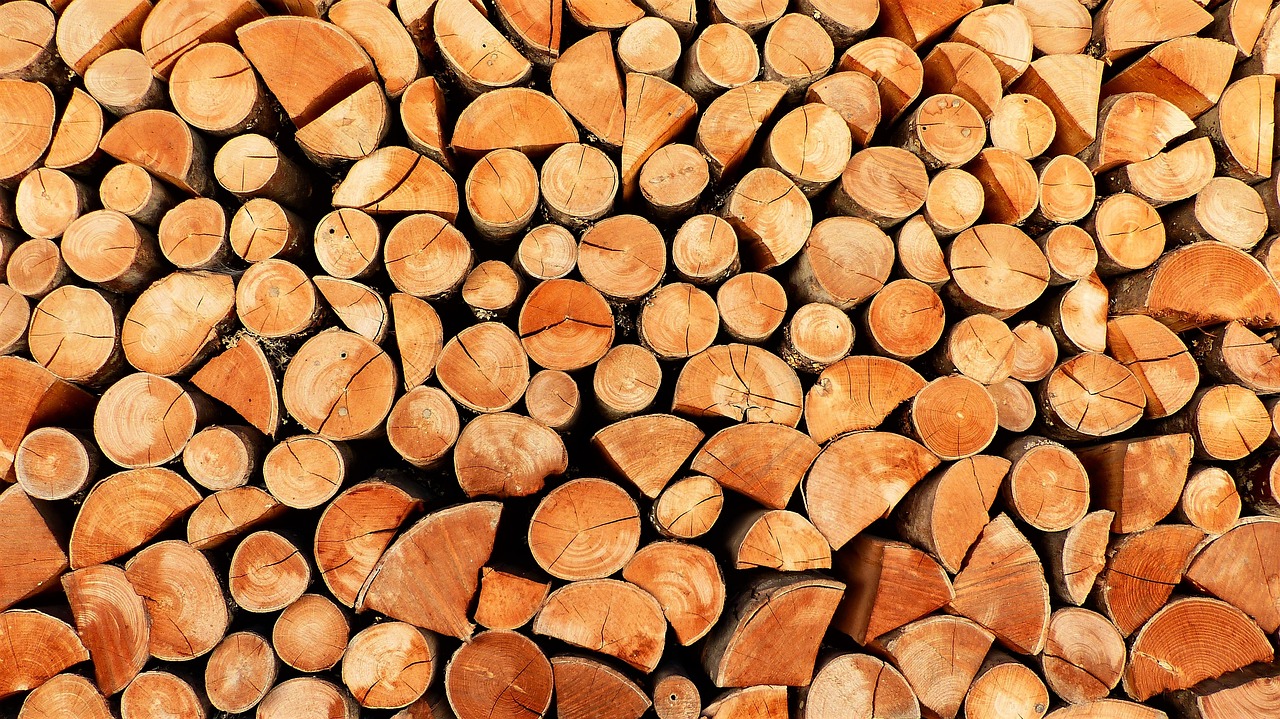
Overheat Protection
When it comes to using portable heaters, is not just a feature; it’s a safety essential. Imagine coming home on a chilly evening, only to find your heater has been running for hours without a break. The thought of it getting too hot and potentially causing a fire is enough to send shivers down anyone's spine. That’s why understanding how overheat protection works is crucial for any homeowner.
Overheat protection systems are designed to monitor the temperature of the heater. If the device detects that it’s reaching a dangerously high temperature, it will automatically shut off. This feature acts as a safety net, preventing overheating that could lead to fires or equipment damage. Think of it as your heater's built-in lifeguard, always watching to ensure everything stays safe.
There are typically two main types of overheat protection mechanisms:
- Thermal Cutoff Switch: This device acts like a circuit breaker. If the heater gets too hot, the thermal cutoff switch will disconnect the power, effectively turning the heater off.
- Temperature Sensors: These sensors continuously monitor the heater’s temperature. If the temperature exceeds a preset limit, the heater will shut down until it cools to a safe level.
It's important to note that while overheat protection is a critical feature, it shouldn’t be the sole factor in your heater selection. Regular maintenance and proper usage are equally important. For instance, keeping the heater free from dust and debris can help ensure that the sensors function correctly. Additionally, always follow the manufacturer’s guidelines for use and maintenance to maximize the effectiveness of the overheat protection system.
In conclusion, investing in a portable heater with a reliable overheat protection feature can provide peace of mind. It allows you to enjoy the warmth of your home without constantly worrying about safety hazards. Just remember, a heater with this feature is like having a safety buddy by your side, ensuring that your cozy evenings remain just that—cozy and safe!
- What is overheat protection in portable heaters? Overheat protection is a safety feature that automatically shuts off the heater when it reaches a dangerously high temperature to prevent fires and damage.
- How can I ensure my heater's overheat protection is functioning properly? Regular maintenance, such as cleaning the heater and checking for any obstructions, can help ensure that the overheat protection system works effectively.
- Is overheat protection enough to ensure safety? While overheat protection is essential, it should be complemented by safe usage practices, such as keeping the heater away from flammable materials and never leaving it unattended.

Best Practices for Safe Use
When it comes to using portable heaters, safety should always be your top priority. Think of your heater as a guest in your home; you want to make sure it feels comfortable and behaves well. By following some essential best practices, you can ensure that your heater warms up your space without causing any trouble. First and foremost, it’s important to keep your heater at a safe distance from flammable materials. This includes items like curtains, furniture, and even paper. A good rule of thumb is to maintain at least a three-foot zone around the heater. This simple act can significantly reduce the risk of fires.
Another crucial practice involves the placement of your heater. Avoid placing it in high-traffic areas where it could easily be knocked over or bumped into. Instead, consider positioning it in a corner of the room, away from foot traffic. Additionally, ensure that your heater is placed on a flat, stable surface to prevent it from tipping over. Remember, even the most advanced heaters can pose risks if not used properly.
Regular maintenance is also key to safe operation. Just like you wouldn’t drive a car without checking the oil, you shouldn’t operate a heater without ensuring it’s in good condition. Make it a habit to inspect your heater before each use. Look for signs of wear and tear, such as frayed cords or damaged components. If you notice anything unusual, it’s best to consult a professional or replace the unit altogether. Keeping your heater clean is equally important; dust and debris can accumulate and lead to overheating. A quick wipe down can keep your heater functioning efficiently and safely.
Moreover, always turn off your portable heater when you leave the room or go to sleep. It might be tempting to let it run all night, but this can significantly increase the risk of accidents. Instead, consider using a timer or a smart plug that allows you to control the heater remotely. This way, you can enjoy warmth without worrying about forgetting to turn it off.
Lastly, educate your family members, especially children, about the safe use of heaters. They should understand that heaters are not toys and should be treated with respect. Encourage them to keep a safe distance and explain the importance of following the guidelines you’ve set. By fostering a culture of safety in your home, you not only protect your property but also ensure the well-being of your loved ones.
- What is the safest type of portable heater?
Electric heaters are generally considered the safest for home use due to their built-in safety features, such as tip-over and overheat protection. However, always ensure that any heater you choose meets safety standards.
- Can I leave my portable heater on overnight?
It's not recommended to leave portable heaters on while you sleep. Always turn them off before going to bed to minimize fire risks.
- How often should I maintain my portable heater?
Regular maintenance, including cleaning and inspections, should be done before each heating season to ensure safe operation.
- What distance should I keep between the heater and flammable materials?
Maintain at least a three-foot distance between your heater and any flammable materials to prevent fires.

Placement Guidelines
When it comes to using portable heaters, the placement of the unit is crucial for ensuring not just effective heating but also safety. Imagine cozying up in a warm room, only to realize that your heater is a potential fire hazard. To prevent such scenarios, it’s essential to consider a few key guidelines when deciding where to position your heater. First and foremost, always keep your heater at least three feet away from any flammable materials such as curtains, furniture, and bedding. This distance acts as a safety buffer, reducing the risk of accidental fires.
Additionally, avoid placing your portable heater in areas with high foot traffic. When heaters are in the way, they can easily be knocked over, leading to dangerous situations. Instead, position them in a corner or against a wall, where they are less likely to be bumped into. If you have children or pets, it’s even more critical to ensure that the heater is out of reach. Consider using a heater with a tip-over switch that automatically turns it off if it falls, adding an extra layer of safety.
Moreover, never use a portable heater in wet or damp areas, such as bathrooms or near sinks. Most portable heaters are not designed for moisture exposure, which can lead to electrical hazards. If you need to heat a bathroom, look for models specifically labeled as safe for such environments. You should also avoid using extension cords with portable heaters, as they can overheat and pose a fire risk. Instead, plug the heater directly into a wall outlet.
In summary, the right placement of your portable heater can make all the difference in creating a safe and warm environment. Here’s a quick recap of the essential placement guidelines:
- Maintain a distance of at least three feet from flammable materials.
- Avoid high-traffic areas to prevent accidental tipping.
- Keep heaters out of reach of children and pets.
- Do not use in wet or damp areas.
- Plug directly into a wall outlet, avoiding extension cords.
By following these placement guidelines, you can enjoy the warmth of your portable heater without compromising safety. Remember, taking a few extra moments to position your heater correctly can save you from potential hazards and ensure a cozy atmosphere in your home.
Q1: Can I use a portable heater overnight?
A1: While it’s possible to use a portable heater overnight, make sure to follow safety guidelines, such as keeping it away from flammable materials and using models with safety features like tip-over protection.
Q2: What type of heater is safest for home use?
A2: Electric heaters with safety features such as overheat protection and tip-over switches are generally considered the safest options for home use.
Q3: How often should I clean and maintain my portable heater?
A3: Regular maintenance is key. It’s advisable to clean your heater at least once a month during the heating season and check for any signs of wear or damage.
Q4: Is it safe to leave a portable heater unattended?
A4: It’s not recommended to leave a portable heater unattended, especially in rooms with children or pets. Always turn it off when leaving the room.
Q5: Can I use a portable heater in my garage?
A5: If your garage is well-ventilated and free of flammable materials, you can use a portable heater. However, ensure it is rated for such use and follow all safety guidelines.
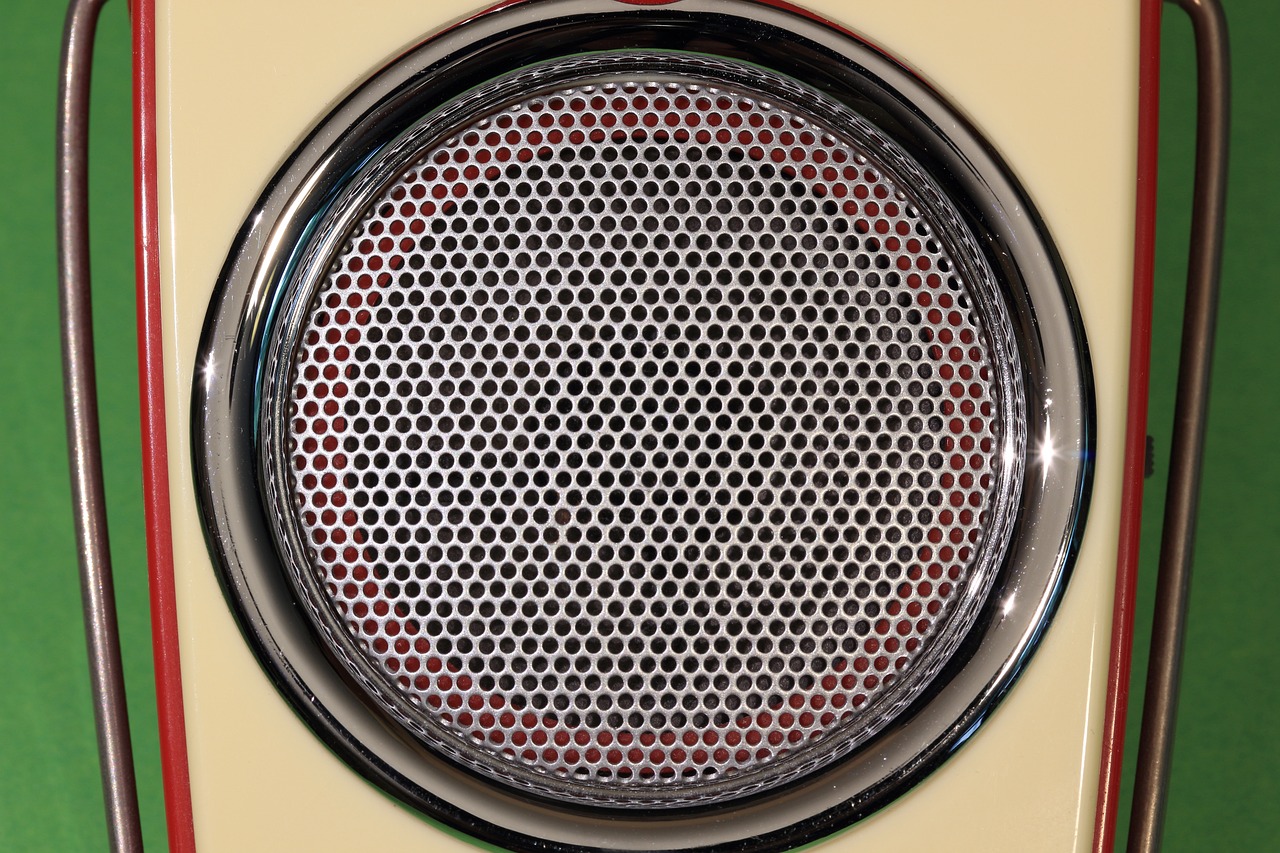
Regular Maintenance
When it comes to keeping your portable heater in tip-top shape, is the name of the game. Think of it like taking your car in for an oil change; it’s all about ensuring everything runs smoothly and safely. By dedicating a little time each month to check your heater, you can prevent potential problems before they escalate. So, what should you be looking for during your maintenance routine? Let's dive into some essential maintenance tips that will keep your heater humming along nicely.
First off, always start with a thorough visual inspection. Look for any signs of wear and tear, such as frayed cords or loose connections. If you spot anything unusual, it’s best to stop using the heater immediately and consult a professional. Remember, safety first! Additionally, dust and debris can accumulate over time, which can hinder the heater's performance. Make it a habit to clean the heater’s exterior and the surrounding area regularly. A simple wipe with a damp cloth can work wonders, but ensure the heater is unplugged before you start cleaning.
Another critical aspect is to check the filters if your heater has them. Some models come equipped with filters that need to be cleaned or replaced periodically. Clogged filters can reduce efficiency and increase the risk of overheating. If your heater has a filter, refer to the manufacturer’s instructions on how to maintain it properly. For those using gas heaters, ensure that the ventilation is clear and unobstructed. This will help maintain proper airflow and prevent any hazardous buildup of gases.
Don’t forget to test the safety features! Make it a point to check the tip-over switch and overheat protection features regularly. These safety mechanisms are your first line of defense against accidents. You can do this by gently tipping the heater to see if it shuts off automatically. If it doesn’t, it’s time to reach out to customer service or a technician. Keeping a log of your maintenance activities can also be helpful; it allows you to track what you’ve done and when, ensuring you don’t overlook any important tasks.
Lastly, consider the manufacturer's guidelines for maintenance. Every heater is different, and the manufacturer usually provides specific instructions on how to care for your model. Following these guidelines not only prolongs the life of your heater but also ensures that it operates safely and efficiently. A little diligence goes a long way in making sure your portable heater is ready to keep you warm when you need it most.
- How often should I clean my portable heater?
It's recommended to clean your heater at least once a month, especially during heavy use in the winter. - What should I do if my heater starts making strange noises?
If you hear unusual sounds, it's best to stop using the heater and have it checked by a professional. - Can I use my portable heater continuously?
It's advisable to avoid continuous operation and give the heater breaks to prevent overheating. - What safety features should I look for in a portable heater?
Look for heaters with tip-over protection, overheat protection, and a sturdy base for stability.
Frequently Asked Questions
- What types of portable heaters are available?
Portable heaters come in several types, including electric, propane, and infrared models. Each type has its own unique benefits and considerations. For instance, electric heaters are convenient and easy to use, while propane heaters offer powerful heating but require proper ventilation.
- How do I choose the right portable heater for my home?
Choosing the right portable heater depends on factors like your room size, energy efficiency, and specific safety features. It's important to assess your heating needs and select a model that provides adequate warmth while ensuring safety during operation.
- What safety features should I look for in a portable heater?
When shopping for a portable heater, look for essential safety features such as tip-over protection and overheat protection. Tip-over protection automatically shuts off the heater if it falls, while overheat protection prevents the heater from reaching dangerously high temperatures, reducing the risk of fire hazards.
- How can I ensure safe use of my portable heater?
To ensure safe use, always follow proper placement guidelines. Keep the heater at least three feet away from flammable materials and avoid using it in crowded areas. Regular maintenance is also crucial; check for any signs of wear and tear to keep your heater operating safely and efficiently.
- What are the energy efficiency benefits of portable heaters?
Energy-efficient portable heaters can significantly lower your utility bills while providing effective warmth. Look for features like programmable thermostats and energy-saving modes that can help you make eco-friendly choices without sacrificing comfort.
- How often should I maintain my portable heater?
Regular maintenance is key to ensuring your portable heater operates safely and efficiently. It's recommended to inspect your heater at the beginning of each heating season and perform any necessary cleaning or repairs to keep it in optimal condition.



















